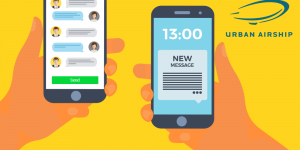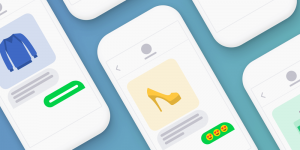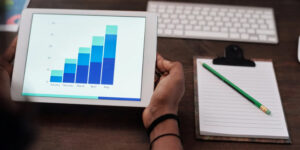
Remember when just one billboard or TV ad could catch everyone’s eye? Well, those days are over. Today, the key is to make sure your messages sparkle across different platforms like emails, social media, mobile apps, and even SMS solutions.
Cross-channel messaging is all about syncing your communications across these platforms so your audience gets a smooth and consistent experience wherever they interact with you. If you use this strategy well, it can transform potential leads into loyal customers.
But with many channels to manage, it’s vital to know how to balance them effectively.
In this guide on cross-channel messaging, we’ll touch on how to:
- bring all your communication platforms together
- craft messages that feel one-on-one
- use data to understand and reach your audience better
These key areas will help you engage with your audience no matter where they are.
Integrating Platforms for Maximum Impact
The first step in effective cross-channel messaging is making sure all your platforms work well together. Whether you’re using email, social media or text messaging, each should tell part of your brand’s story.
Integration is key here. Without it, your story could end up confusing instead of convincing your audience.
To achieve seamless integration, keep your visuals, tone, and messages consistent across all platforms. This doesn’t mean everything has to look and sound identical; rather, it should all fit together harmoniously.
Use tools that help you share data smoothly across different channels, making sure everyone is aligned.
With good integration, you get a complete view of your marketing efforts. It allows you to refine what isn’t working and focus more on strategies that are successful.
Leverage Cross-Platform Campaigns

Today’s consumers switch between different devices — like smartphones, tablets, and desktops. By weaving your message across these various platforms, you can increase engagement and make it easy for people to connect with your brand no matter where they are.
For example, an email campaign might encourage someone to check out your product, which is then reinforced by a social media ad, followed by an SMS reminding them of a special discount. Each platform continues the story, helping guide the customer through the sales journey without missing a step.
By breaking down the barriers between these platforms, every message can build upon the last, creating a cohesive and engaging experience for your audience.
Creating Personalized Content for Cross-Channel Messaging
Creating personalized messages makes your audience feel special and understood. This means using the data you have to tailor what you send them.
Whether it’s wishing them a happy birthday or suggesting products they’ve shown interest in, a touch of personalization can turn brief curiosity into a long-lasting connection.
Timing is crucial too. Sending the right message at the right time can dramatically increase the effectiveness of your communications. For instance, an online store might send a gentle reminder about items left in a cart or offer loyalty rewards soon after a purchase.
Personalization adds a dynamic quality to your messages, addressing the individual needs and preferences of your audience.
Also Read: Role of SEO in Content Marketing
Segment Your Audience for Better Precision

Segmenting involves breaking your audience into smaller groups based on traits or behaviors. This allows you to send messages that strike a chord with each group’s specific interests and needs.
By using data like behavior, demographics and past purchases, you can identify the best content and channels for each segment. While a one-size-fits-all strategy might seem easier, it’s often less effective.
By focusing on smaller, more defined segments, you can deliver targeted messages that truly engage your audience, enhancing their experience and building long-term loyalty.
Harnessing Analytics for Better Cross-Channel Marketing Results

Using data-driven insights is a crucial part of cross-channel messaging. Think of analytics as your guide through the complex world of marketing. They help you figure out which campaigns are worthy of investment and which should be set aside.
With detailed insights into customer behavior and campaign performance, businesses can make smart choices about where to invest their efforts and when to tweak their strategies. Real-time analytics also make it easy to conduct A/B testing, allowing you to see which version of a message hits the mark.
Adapt Your Strategies with Feedback Loops
Feedback loops are essential for improving cross-channel campaigns over time. By gathering and analyzing feedback from your audience, you can consistently refine and enhance your messaging strategy.
Tools like surveys, customer reviews and social media comments offer valuable insights into what your audience appreciates or dislikes about your content. These feedback loops provide clear signals on when to adjust your approach and when to keep things as they are.
Building strong feedback mechanisms also means maintaining an open dialogue with your audience. Listening and responding to customer input can guide your future content strategies. It ensures your message always connects and resonates with your audience, no matter which channel they pick for the day.
Wrapping Up
Cross-channel messaging presents a powerful way to connect with your audience in the busy digital space. By bringing your platforms together, personalizing every interaction, and using data to guide your decisions, you can make sure your messages don’t just reach people—they resonate with them. The secret to success is a commitment to continuous learning and flexibility as digital trends change.






